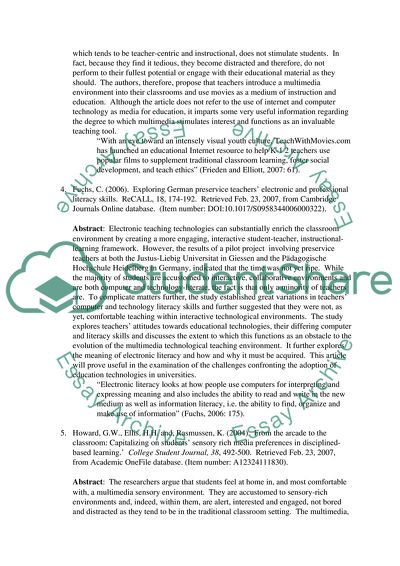Cite this document
(Education by Computers Annotated Bibliography Example | Topics and Well Written Essays - 2771 words, n.d.)
Education by Computers Annotated Bibliography Example | Topics and Well Written Essays - 2771 words. Retrieved from https://studentshare.org/technology/1706432-annotated-reference-list
Education by Computers Annotated Bibliography Example | Topics and Well Written Essays - 2771 words. Retrieved from https://studentshare.org/technology/1706432-annotated-reference-list
(Education by Computers Annotated Bibliography Example | Topics and Well Written Essays - 2771 Words)
Education by Computers Annotated Bibliography Example | Topics and Well Written Essays - 2771 Words. https://studentshare.org/technology/1706432-annotated-reference-list.
Education by Computers Annotated Bibliography Example | Topics and Well Written Essays - 2771 Words. https://studentshare.org/technology/1706432-annotated-reference-list.
“Education by Computers Annotated Bibliography Example | Topics and Well Written Essays - 2771 Words”, n.d. https://studentshare.org/technology/1706432-annotated-reference-list.


